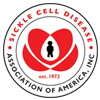Trusted Resources: Evidence & Education
Scientific literature and patient education texts
A Study of Predictors of Clinical Outcomes and Healthcare Utilization in Children with Sickle Cell Disease Undergoing Allogeneic Hematopoietic Cell Transplantation
source: American Society of Hematology
year: 2015
authors: Prakash Satwani, Ruta Brazauskas, Staci D. Arnold, Naya He, Yimei Li, Richard Aplenc, Matt Hall, Yoshiko Atsuta, Jignesh D Dalal, Theresa Hahn, ZheZhen Jin, Carmem Sales-Bonfim, Nandita Khera, Wael Saber
summary/abstract:Introduction: Current advances in allogeneic hematopoietic cell transplant (alloHCT) may warrant a paradigm shift in managing children with sickle cell disease (SCD). This study characterizes the clinical outcomes and health care utilization (HCU) of alloHCT for pediatric SCD. We hypothesize that early alloHCT will have improved clinical outcomes, and decreased HCU.
Methods: The Center for International Blood and Marrow Transplant Research database was used to identify children 21 years or less with alloHCT for SCD in the United States. Patient data included comprehensive research forms (CRF) from 2000-13 and transplant essential data (TED) forms from 2000-11.
CRFs provided clinical risk factors associated with overall survival, graft failure, grade III-IV acute GVHD, and GVHD related event free survival (GREFS) – the survival free of graft failure, chronic GVHD, or death. Risk factors included age, gender, performance status, year of alloHCT, prior SCD complications and therapy, CMV status, donor type, conditioning regimen, and GVHD prophylaxis. Due to low event rates and sample size, only univariate analysis of risk factors was performed.
TED data was merged with Pediatric Health Information System (PHIS) inpatient data using a probabilistic merging algorithm to determine risk factors and clinical outcomes associated with HCU. Available PHIS adjusted cost data was used to determine the total adjusted cost for all inpatient admissions per patient per hospital day. To standardize these costs, the total adjusted cost per 30 hospital days was calculated for each patient and used as the primary HCU outcome. HCU outcomes were analyzed for the alloHCT year, day 0 to day +365.
organization: University Medical Center, New York; CIBMTR (Center for International Blood and Marrow Transplant Research),Wisconsin; Medical College of Wisconsin, Morgan Stanley Children's Hospital of New York- Presbyterian; University of Pennsylvania School of Medicine; Children's Hospital of Philadelphia; Children's Hospital Association, Overland Park, KS; Japanese Data Center for Haematopoietic Cell Transplantation, Nagoya; Nagoya University Graduate School of Medicine; The Children's Mercy Hospitals and Clincs, Kansas City; Roswell Park Cancer Institute, Buffalo; Federal University of Parana; Hospital de Clinicas- UFPR, Curitiba; Mayo Clinic Arizona and Phoenix Children's Hospitalread more
Related Content
-
100 Years But Only One Drug: Sickle Cell Patients Wait For HelpLast week, 100,000 Americans with sickle...
-
Robust Clinical and Laboratory Response to Hydroxyurea Using Pharmacokinetically Guided Dosing for Young Children Wi...Hydroxyurea is FDA-approved and now incr...
-
Guidelines for the use of hydroxycarbamide in children and adults with sickle cell disease: A British society for ha...Sickle cell disease (SCD) is a generic t...
-
The Family Perspectivehttp://www.sicklecelltransplantconsortiu...
-
Vitamin D Supplements May Reduce Pain-related Emergency Room Visits in Children With SCDTaking vitamin D supplements may lower t...
-
Voxelotor can Promote Long-Term Benefits in Teens, Adults With SCD, Latest Clinical Data ShowGlobal Blood Therapeutics’ lead therap...
-
Today’s Faces of Sickle Cell Disease: Jennelle StephensonJennelle Stephenson was diagnosed with S...
To improve your experience on this site, we use cookies. This includes cookies essential for the basic functioning of our website, cookies for analytics purposes, and cookies enabling us to personalize site content. By clicking on 'Accept' or any content on this site, you agree that cookies can be placed. You may adjust your browser's cookie settings to suit your preferences. More Information
The cookie settings on this website are set to "allow cookies" to give you the best browsing experience possible. If you continue to use this website without changing your cookie settings or you click "Accept" below then you are consenting to this.




 +myBinder
+myBinder
